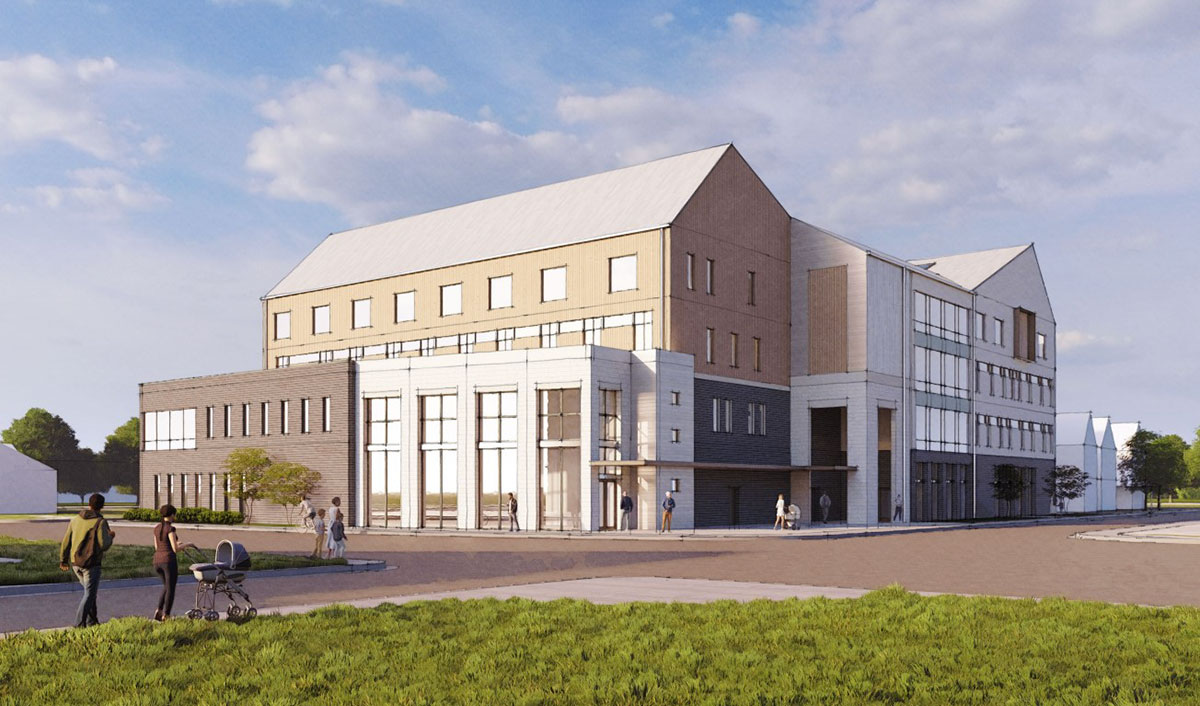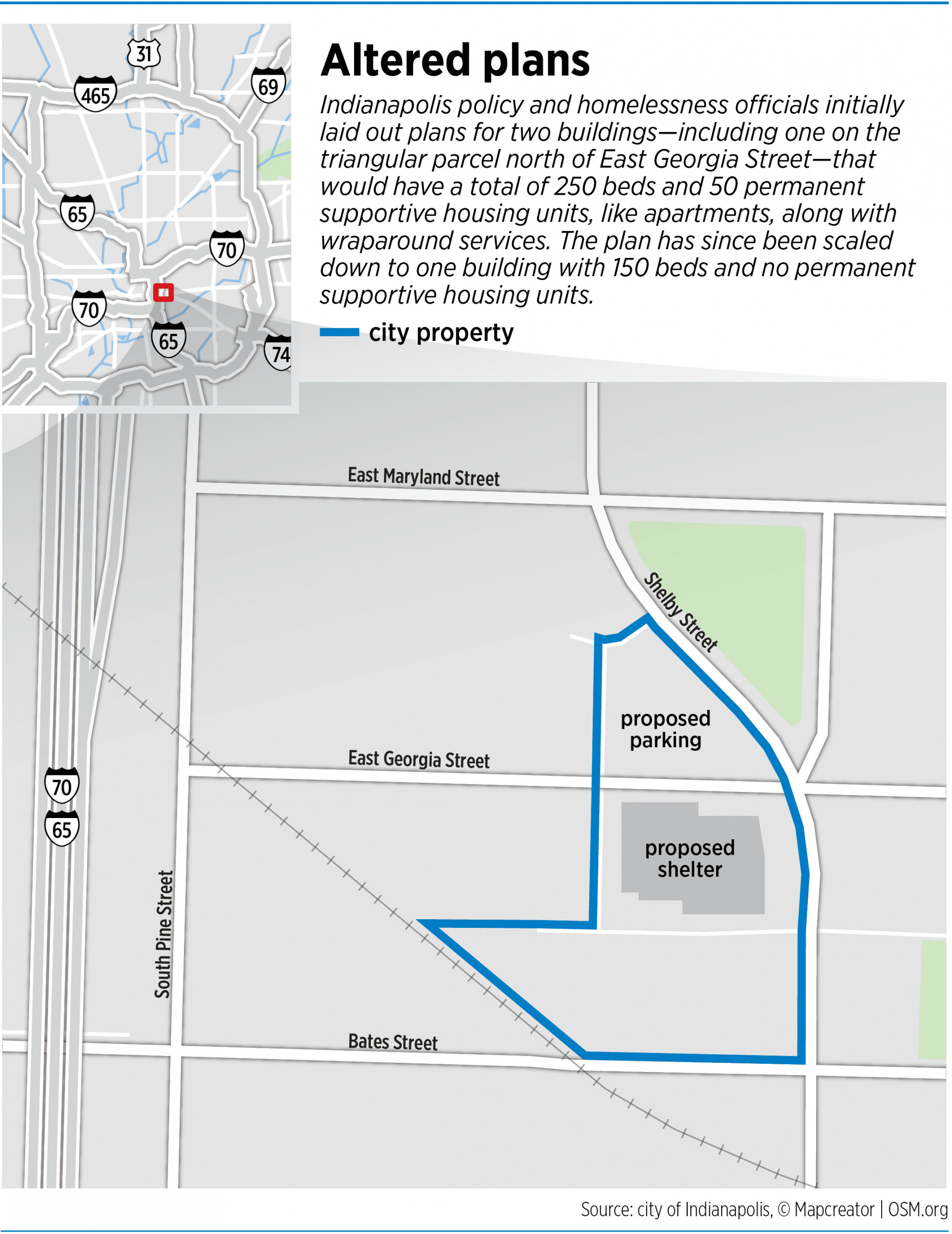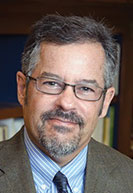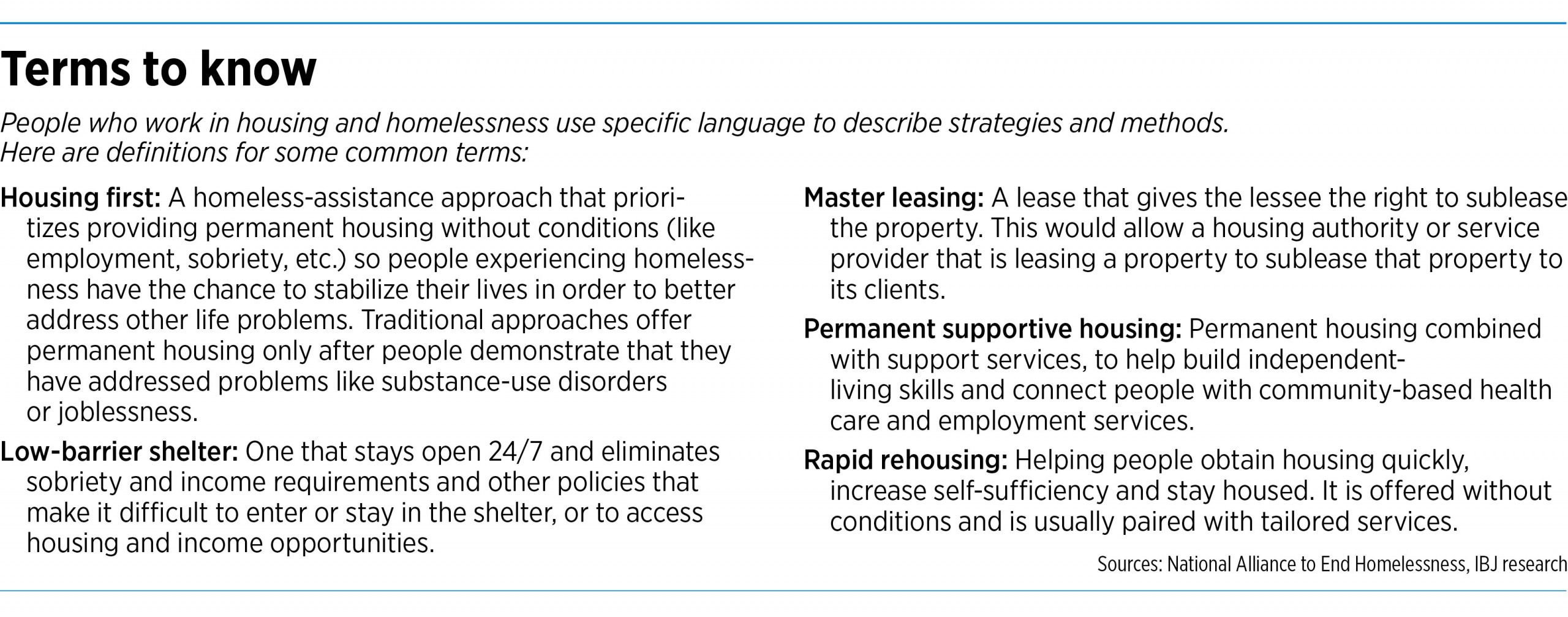Subscriber Benefit
As a subscriber you can listen to articles at work, in the car, or while you work out. Subscribe NowAt the screening last summer of “Beyond the Bridge,” a documentary on homelessness by a local filmmaker, Indianapolis Mayor Joe Hogsett said he understands that political will and leadership are necessary to ensure that homelessness is “brief, rare and non-recurring.”
“I want to make it abundantly clear that I am continuing my commitment to ‘housing first,’ and I am answering the call,” Hogsett told attendees.
“Housing first” refers to providing permanent housing without conditions (like employment, sobriety, etc.) to people experiencing homelessness, then offering support services in their new home. It contrasts with the traditional approach, which seeks to help people with their mental health problems, substance-use disorders and other problems first, then offer them the responsibility of permanent housing.

At the Aug. 20 documentary screening, Hogsett also announced the creation of the Mayor’s Leadership Council on Homelessness and named a “housing czar” in his administration.
That announcement came as the city prepared to break ground in the next few months on a low-barrier homeless shelter and to pilot a master leasing housing program, which would allow a housing authority, for example, to sublease to clients housing that the organization rents.
The planned shelter, called the Housing Hub, will be built in the 1000 block of East Georgia Street, just north of Fountain Square. It’s expected to open in 2027. It’s called low-barrier because common entry requirements like sobriety and income are waived, and it’s open 24/7.
But some housing-first advocates say the shelter doesn’t further the housing-first goal because it won’t include permanent-housing options. They are worried the $32 million shelter will drain funds that could otherwise go toward housing-first efforts.
Don Sawyer, the Indianapolis filmmaker behind “Beyond the Bridge,” traveled the country in search of communities, such as Milwaukee, that have seen success in solving chronic homelessness.. What he found, he said, was that these communities provided treatment and other supportive services in conjunction with housing, instead of before housing. They bypassed the shelter system altogether, he said.
Sawyer applauded the Hogsett administration’s commitment to improving homelessness but said the Housing Hub will play out one of two ways.
“If Indianapolis is not careful, [the shelter] will be its homeless response, and that will send Indianapolis back to 20 years ago,” Sawyer told IBJ. “But if there is enough goodwill and planning, and [the shelter] is simply a stopgap for people within a system that shuttles people from shelter into whatever they need … ultimately, preferably into their own apartment … Indianapolis could become the next community that the country is talking about on how they solved their homelessness issue.”
The shelter’s projected $32 million construction will be funded entirely by tax dollars. The city has already spent $2.1 million acquiring the land and has allocated $12 million in COVID relief funds for construction. The project was also awarded $20 million from the Indiana Housing and Community Development Authority grant program.
The 63,000-square-foot Housing Hub will provide 150 beds in private rooms. Twenty units with four beds each will serve families, while 10 units with two beds each will host couples. The remaining 50 beds will go to individuals.
Aryn Schounce, the senior policy adviser Hogsett named his housing czar, said the shelter is tailored to fill gaps in the system. Schounce said city officials worked with the Coalition for Homelessness Intervention and Prevention to create a design that will allow families to stick together. That includes those that are male-led, same-sex or have several children, families that would otherwise be split into different shelter spaces.
The low-barrier shelter will also allow pets, meeting the needs of people who might otherwise not enter the system in order to take care of their companions.
In initial plans, 50 apartments were reserved for individuals transitioning out of homelessness. Officials cut that element, Schounce said, in part due to costs but also because the example set by similar facilities is that shelter space should not be co-located with permanent supportive housing.
The city this year provided federal funds to community development corporations and housing providers that made 66 permanent supportive housing units in the city available, according to the Department of Metropolitan Development. An additional 30 are slated to be finished next year, and 60 more are expected to come online in 2026.
Strategy disagreements
But critics say if the city were following a true “housing-first” strategy, it would invest directly in permanent supportive housing instead of build a shelter.
“The mayor stood up at the screening of ‘Beyond the Bridge’ and said, ‘We’re going to do housing first,’” said Rabbi Aaron Spiegel, leader of the Greater Indianapolis Multifaith Alliance. “Housing first is not shelter. Shelters don’t work.”
He said while the city could benefit from a low-barrier shelter, it needs permanent supportive housing more. He would have liked to see the city invest its $12 million in COVID relief funds in those types of units.
Finding a balance between investing in a shelter and permanent housing options is “the big question” Indianapolis service providers have to grapple with, said Chelsea Haring-Cozzi, executive director of CHIP.
Shelters can become “destinations to nowhere” if there aren’t housing units to move on to, she said.
Schounce said concerns about resource availability arise from scarcity. That’s why one goal of the Mayor’s Leadership Council on Homelessness is to identify and “grow the pie” of resources.
The council is composed of members of 17 groups and organizations.
“We don’t see it as a zero-sum game. We see it as something where … it’s a both/and,” Schounce told IBJ.
Haring-Cozzi said work to prevent people from needing shelter is ongoing but “not at all at the scale that it needs to be.” There’s a need to “quadruple the investment in housing exits and solutions,” she said.
The basis for that estimate? Each shelter bed serves three to four people per year, meaning at least three to four pathways out of the shelter and into housing are needed per year to end homelessness.
Brian Crispin, communications director for Wheeler Mission, told IBJ his organization is serving more people than it did before the pandemic, which began in 2020. Before then, Wheeler Mission—which operates both a men’s shelter and one for women and families—served 700-900 people per night. In the years since, the shelter has served as many as 1,300 per night.
Numbers are lower than that now, but they’ve not returned to pre-pandemic levels, he said. The planned low-barrier shelter will help, he said, but “it’s not going to fix everything.”
Cost questions
While city leaders have cost projections for building the shelter, estimating annual operating costs remains unclear. Schounce said that’s for two reasons. First, city officials are still negotiating with groups that will provide support services, including access to assistance like replacement birth certificates or connections to the workforce. Horizon House will serve as operator for the Housing Hub’s day center and housing navigation center, while Aspire Indiana Health will operate the low-barrier shelter.
Second, the budget for the newly created downtown economic enhancement district—the only funding mechanism identified for shelter operations—has not been set.
Draft budgets created by the Indy Chamber and Downtown Indy Inc. show the tax district would raise $4.65 million a year for multiple downtown enhancements. A starting budget presented in 2023 allocated $1.5 million toward the shelter. The tax district’s governing board hasn’t met to propose an official first-year budget.
A press release from the city last month said public, corporate and philanthropic funds will also go toward shelter operating costs.
However, the Rev. David Greene, who has long been involved in local homelessness policy, said he anticipates operating costs to far exceed what the economic enhancement district can provide. While he doesn’t philosophically disagree with the shelter plan, he said, he worries that funding sources—like philanthropy—will divert support from other nonprofits.
“Is it the same money that somebody’s given to Wheeler Mission? Is it the same money that somebody’s given to Horizon House? Is this new money? Where is this money coming from to run that facility?” Greene said.•
Please enable JavaScript to view this content.







This article continues to reinforce logic that, its a broken solution for the problem.. Housing first seems to be proven. How many people are ready for homes now? This is only a temporary solution. There is already a proven plan working for housing first. Even the location in Lafayette says they don’t have enough permanent housing.
Wheeler mission proves it won’t work. After 8am, the residents in Wheeler are found sleeping on East street just south of Ohio. The business owners have all surrounded their properties with fences. What will this neighborhood end up looking like. And how will this serve the homeless. corralling them in bunk beds is an insult to their mental progress.
Mayor Hogsett showed up to for his 15 minute speech to the crowd at the screening and then took off.
His posse came in and bought up land without a concise plan or even sitting in community to talk with us residence.. The plan continues to change.
Arbitrarily taxing the one mile square district to fund this is not right way to fund it.
It sounds like there another Indy-11 scenario. We in on the street are finding ourselves having to sell to recover. Thanks Mr. Mayor. His boys began by buying land without communicating with the residents within 50 feet. There are 600k homes down shelby. Shelby can be a major artery to fountain square from Washington street. Wheres the long term development in the city when we need them. To me this shows they are shooting from the hip.
Worst of all: The homeless will require a much more developed strategy. Housing first is a proven method. There are many homeless ready for housing first. Give them an incentive and professional intense phycological guidance. There are buildings around that with a bit of infrastructure can be housing first. If you really want the project to flourish, care about homeless, buy all the land available on this street for permanent housing.
John – that’s a lot of words to remind us you don’t want it near your property. “His boys”?
The fix requires a whole lot of money spent at the state level and that simply isn’t coming.
You are correct Joe. I feel, just to say I don’t want it may not be enough for non related constituents to understand how this plan is not in the best interest in the residents or the homeless. I do support the housing first program. I attended the Beyond the Bridge screening. Its working and is suggested by others who researched it and some who have it in practice. Wheeler mission, Horizon house and the similar facility in Lafayette seem to have too many glitches. I believe in the housing first program is better than what I see going on on East Street. Your comments are making this personal. The article itself and those who have housing first in place show it works. This LBH program has been redefined too many times since they bought the first plat.
They were just granted millions more for the project. Thanks for you input.
Glad this has prompted you to do research on what’s a very large and complex issue but you’ve spent months bemoaning the location of the shelter every time it’s been mentioned and how it affected a speculative property you bought with hopes it would become the next boom area. I didn’t make it personal. As I’ve said before, I feel for you but that’s also the breaks of a real estate investment.
i’d rather discuss this direct. [email protected]